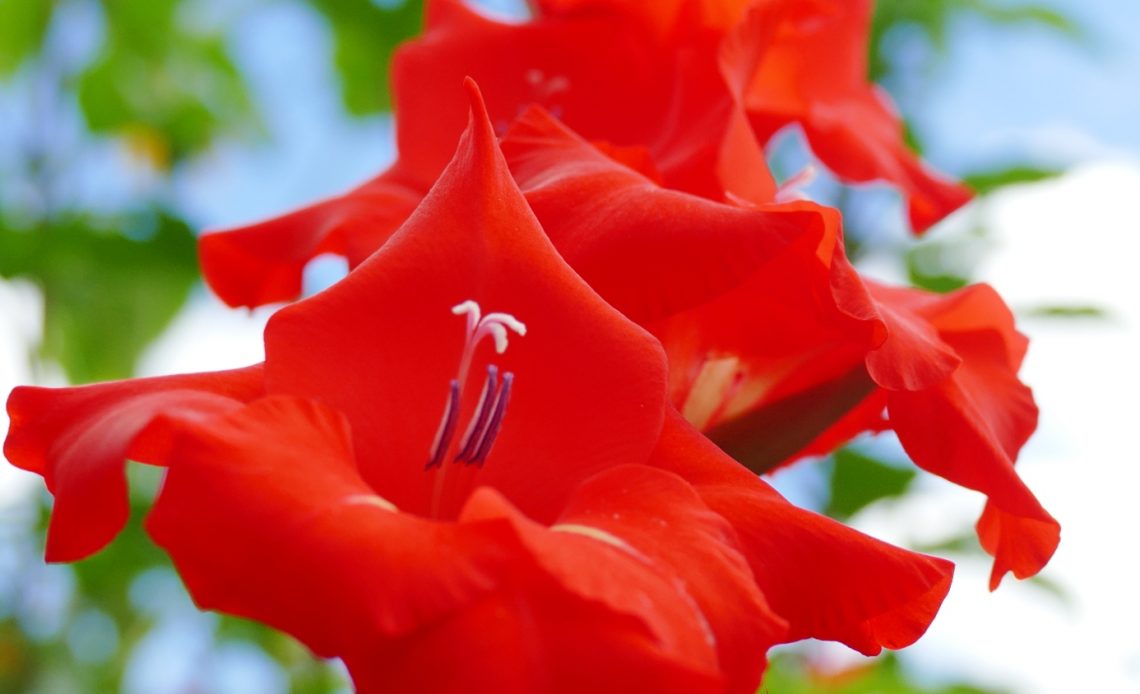

We’re here to help! Wild Yards is a completely free website that is 100% dedicated to helping you create a wildlife-friendly, sustainable yard. Read more
WildYards is reader-supported. When you buy a product through a link on our site, we may earn a comission. Every product is independently selected by our (obsessive) editors and our reviews are unbiased and objective. Read more about our mission or our privacy policy.
If you’re planning a cut flower garden, don’t forget to include gladiolus. Native to South Africa, the gladiolus is a tall plant with sword-shaped leaves and long stalks sporting bell-shaped flowers. At first glance, gladioli are similar in appearance to snapdragons, and they come in many of the same colors, too, including purple, white, pink, red, yellow, and orange. Gladioli are hardy from zones 7 through 10, preferring warm climates to cool ones. If you’re new to growing these beautiful flowers, understanding the gladiolus growing stages will help you know what to expect.
Gladioli are started from bulbs, called corms, which sprout within 2 to 3 weeks of planting. Gladioli flower in mid to late summer and continue to bloom for several weeks. As old flowers fade out, plants produce new blooms. Plants go dormant over the winter and can be grown as perennials in warm growing zones.
Stage 1: Planting gladiolus bulbs (corms)
Gladioli stalks can grow up to 5 feet tall, but these flowers start from small bulbs, called corms, that measure 1 to 2 inches in diameter. It’s best to plant gladiolus corms in spring after the last frost of the season when temperatures reach 60 to 80 degrees Fahrenheit. Corms should be planted in moist yet well-draining soil that has been amended with manure or compost to make it loose and loamy. Ideally, the soil should have a slightly acidic to neutral pH of 6.0 to 7.0.
Plant gladiolus corms root side down at a depth of 4 to 6 inches, leaving 6 to 8 inches in between corms. Be sure to plant the corms in a place where they will receive full sun. Backfill over the corms carefully, tamping the dirt down gently to remove air pockets and make sure the corms stay in place.
It’s important to keep corms well watered during this gladiolus growing stage, but you should also avoid overwatering them. If your gladiolus corms are sitting in muddy soil, they’ll rot quickly. Be sure to avoid planting gladiolus corms in low-lying areas where water pools. If your region’s soil naturally retains water, be sure to amend it with sandy potting soil, such as that used to grow lavender.
Conversely, if you find the soil your gladiolus corms are planted in is drying out too quickly in between waterings, then use a mulch to prevent rapid hydration loss. Straw, lawn clippings, leaves, and wood chips all work well. A layer of mulch that is 3 or 4 inches thick will also help prevent weeds from growing.
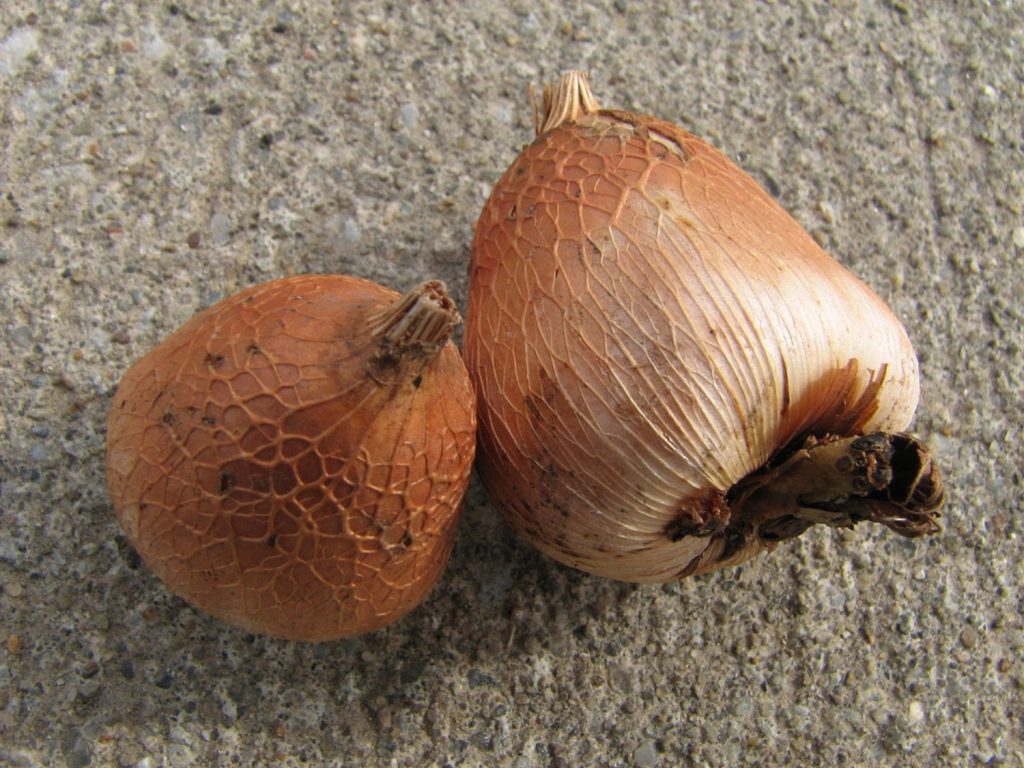
Stage 2: Sprouting
After 2 to 3 weeks, your gladiolus corms will begin sprouting. You’ll notice bright green shoots emerging from the soil. Because gladiolus corms grow roots before they produce foliage, once they sprout, you can be certain the plants have produced healthy root systems.
This gladiolus growing stage signals the plant’s shift from “seed” to “seedling”. The gladioli are no longer relying on their corms for sustenance, but instead are using their roots to absorb moisture and nutrients. Growing foliage is a necessary next step that will enable the plants to photosynthesize and produce their own food.
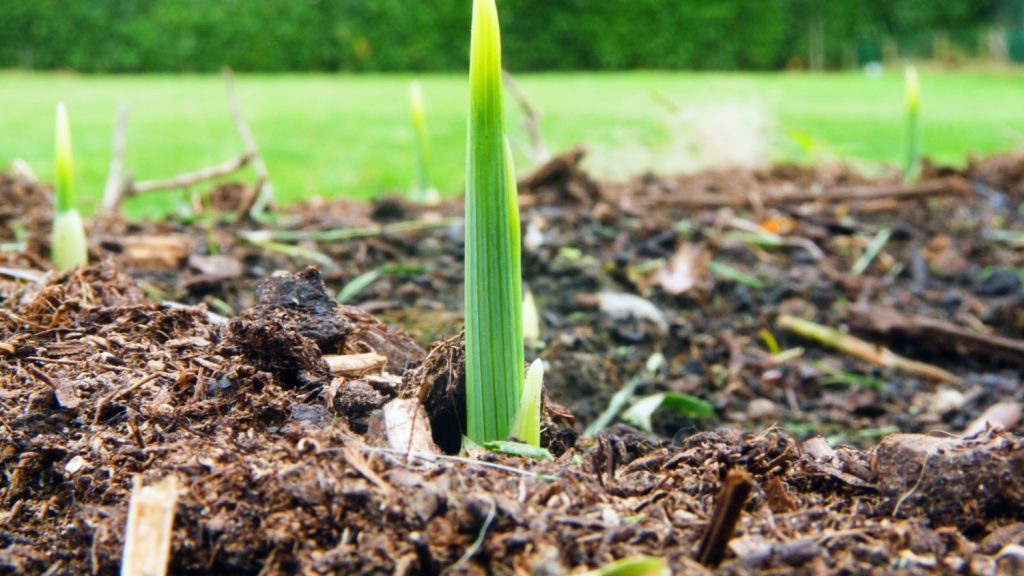
Stage 3: Growing
The sprouting gladiolus growing stage signals the start of the active growing phase. Shortly after new shoots emerge, the plants begin producing foliage in earnest. It’s during this period that the gladiolus will gain the most size, with growth slowing down once the plants start making flowers.
During this gladiolus growing stage, new plants will start developing adult leaves. Gladiolus leaves are long and narrow, similar to the foliage produced by tulips, hyacinths, and irises. New leaves emerge from the tips of the stems and are a vibrant medium-green.
You can estimate how old a gladiolus is by counting its leaves. Young plants have 6 to 8 leaves on average, but gladioli that are three years old or older may have upwards of 24 leaves. Although it may seem like the more leaves and stems gladioli have, the better, that’s not always the case. Plants that produce too many leaves may not have enough nutrients available to support their foliage and produce blooms.
Ensuring there is adequate space between plants, and removing the lower leaves, can help enhance the plant’s performance. Only remove 3 or 4 leaves from the plant at a time, focusing on trimming the oldest leaves first. Cut leaves away as close to the stem as possible, as well as any yellow, brown, or obviously dying leaves. This will help encourage the gladioli to focus their energy on blooming.
Stage 4: Flowering
Now for the most exciting gladiolus growing stage: flowering! Once your gladioli have become established and have produced enough foliage to support their energy needs, they will shift their focus once more from growing to flowering. In general, it takes anywhere from 90 to 100 days for gladioli to bloom from the time they’re planted.
Gladioli typically bloom in mid to late summer. Corms that were planted in early spring tend to bloom sooner than corms planted later in spring. But when exactly your gladioli bloom depends on several factors, including sunlight, water, soil conditions, and temperature.
It’s also worth noting that how much light your gladiolus receives influences how vibrant its blossoms are. Flowers that are growing in partial shade conditions will produce paler flowers that may have a washed-out or pastel appearance. But gladioli growing in full sun will produce vibrant flowers that are more likely to attract bees, hummingbirds, and butterflies.
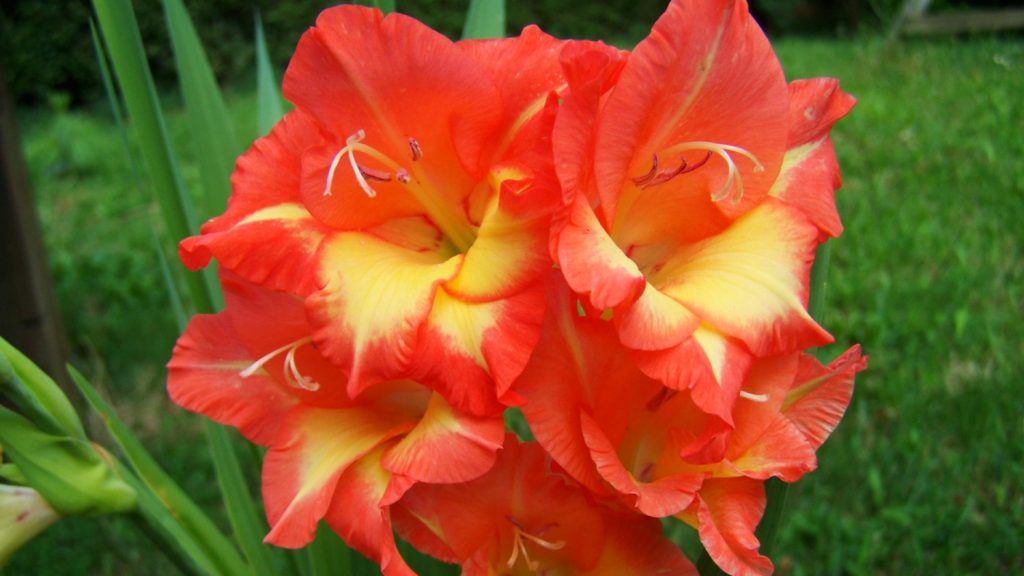
Stage 5: Fading out
Gladioli bloom sequentially. Each stem produces several flowers during the blooming period. After the flowers have bloomed, they will begin fading out. Flowers lose their vibrant color, wilt, and, if allowed to stay on the plant, will fall off on their own eventually.
It’s important to keep an eye on your gladioli during this time so you can deadhead them. Flowers that have begun fading out should be trimmed from the plants to encourage new blooms to develop. Use a sharp pair of scissors to cut the stems of faded-out flowers all the way back to the base of the plant.
Although the number of flowers a gladiolus produces can vary depending on variety and how well its growing conditions are being met, most gladioli produce 8 to 12 flowers per stem. Flowers bloom over the course of several weeks, rather than all at once. This makes them an excellent landscaping choice since they provide weeks of vivid color.
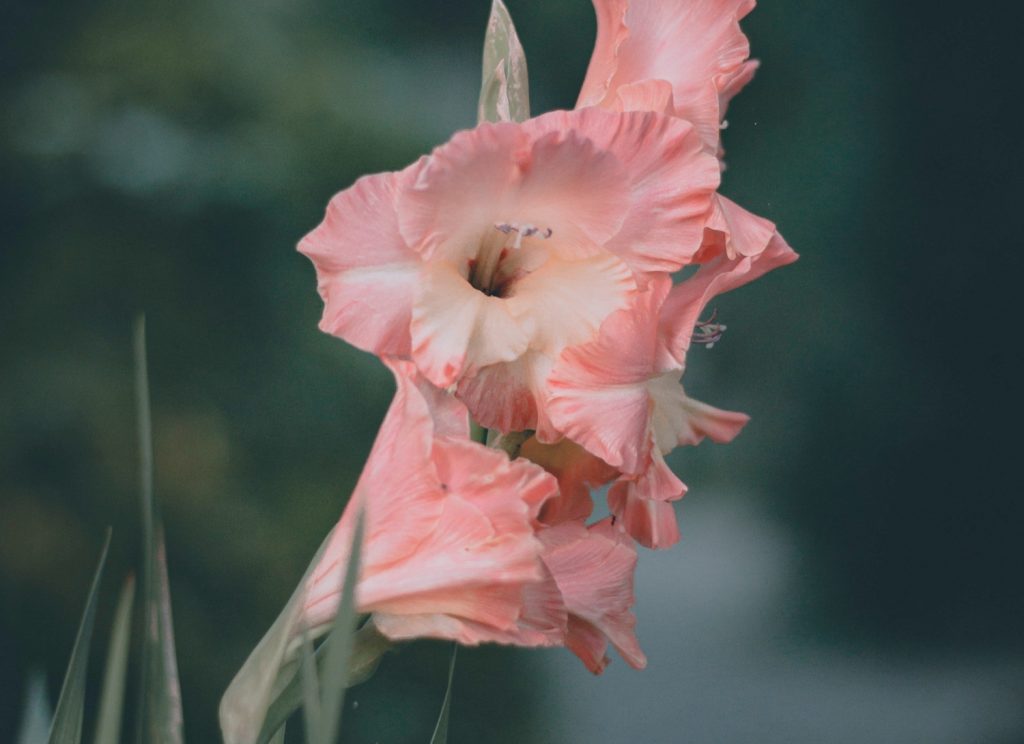
Stage 6: Corm development
After the flowers have bloomed, plants turn the corner to a new gladiolus growing stage. Plants propagate by producing new corms at the base of old corms. Over time, the old corm will wither and die, giving the new corm the space and nutrition it needs to develop. It can take several weeks for new corms to grow.
In cooler climates where gladioli are grown as annuals, corms can be harvested to be planted the following season. Harvest your gladioli corms after all of the foliage has died back and before the first frost of the season. Shake the excess dirt from the corms, and allow them to dry outside for a week before storing them in a cardboard box in a cool, dry place.
Stage 7: Dormancy
In warmer climates, gladioli will come back on their own the following growing season. In this case, there’s no need to dig up the corms. However, it is worth mentioning that gladioli will perform better if they are divided periodically. Cutting away old corms gives new corms more space and enhances growth in spring and summer.
If you don’t need to divide your gladioli, then you don’t have to do anything to prepare the plants for winter. Just keep an eye on the weather report. If temperatures stay below 32 degrees Fahrenheit for more than 3 or 4 days, cover the gladioli corms with a thick layer of hay or mulch to insulate the soil. If the corms stay too cold for too long, they’ll die, and you’ll have to plant new ones.
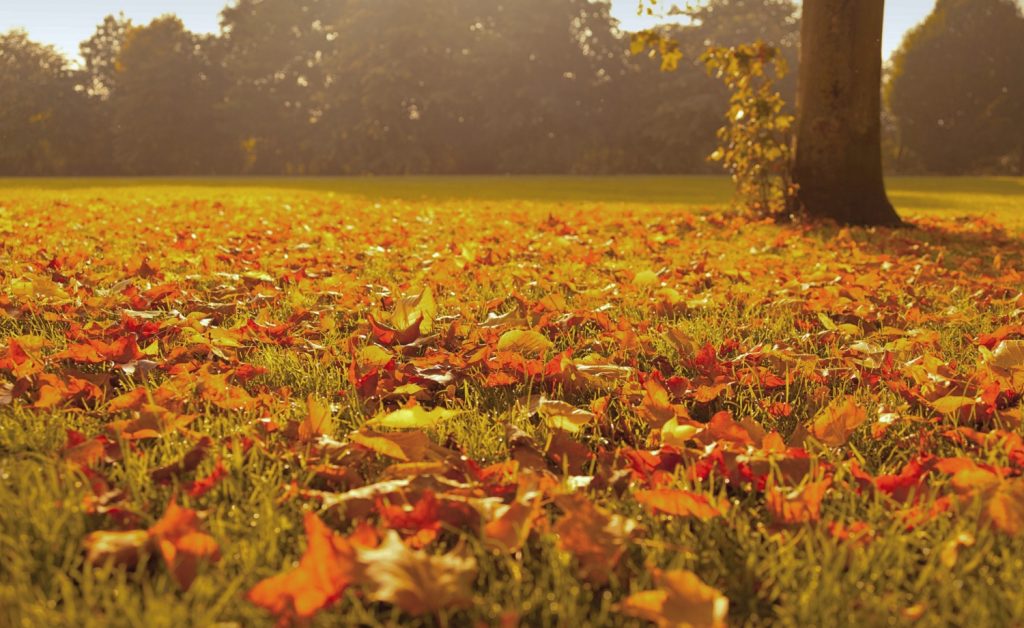
How can you grow healthy gladioli?
Understanding the gladiolus growing stages is the first step to growing healthy gladioli. But there are other things that you need to keep in mind to make sure your gladioli perform their best. Here are a few of the most important things to remember when growing gladioli.
Meet the plant’s light requirements
Gladioli rely on sunlight to grow and produce vibrant blooms. If your gladioli’s sunlight needs are not met, then it will take longer for the corms to sprout up. Foliage production will also be much slower, and it will take longer for the plants to flower compared to gladioli which receive adequate sunlight. Once the plants do flower, the blooms will be faded and sad-looking.
Gladioli need at least 6 hours of direct sunlight every day. When grown in particularly hot climates, plants may do best with morning sun and dappled afternoon shade. To make sure your gladioli perform their best, be sure to give them plenty of light.
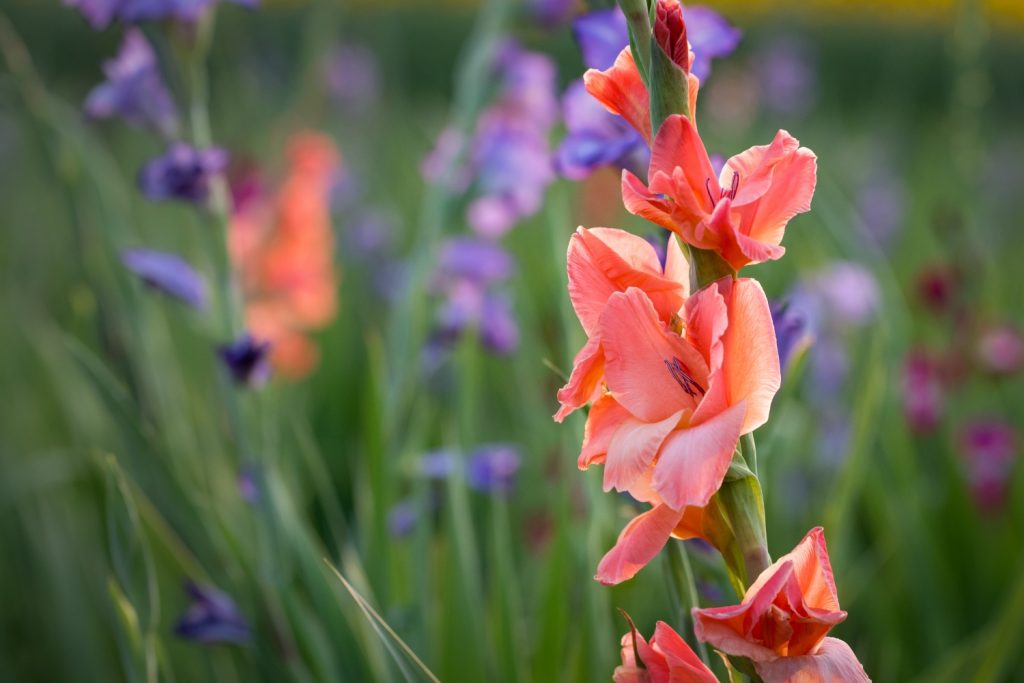
Amend the soil as necessary
Gladioli aren’t particularly difficult to grow, but they can be picky about their soil requirements. These plants will develop root rot if left sitting in water for too long. Understanding your native soil’s properties ahead of time allows you to care for your gladioli more effectively.
Test your soil before planting gladiolus corms. If the soil is too alkaline, mix in some peat moss to lower the pH. And, if your soil is too acidic, add some manure. Heavy clay-dense soil should be amended with plenty of perlite to allow for better aeration and drainage. Sandy soils, on the other hand, should have plenty of compost mixed in to improve soil structure.
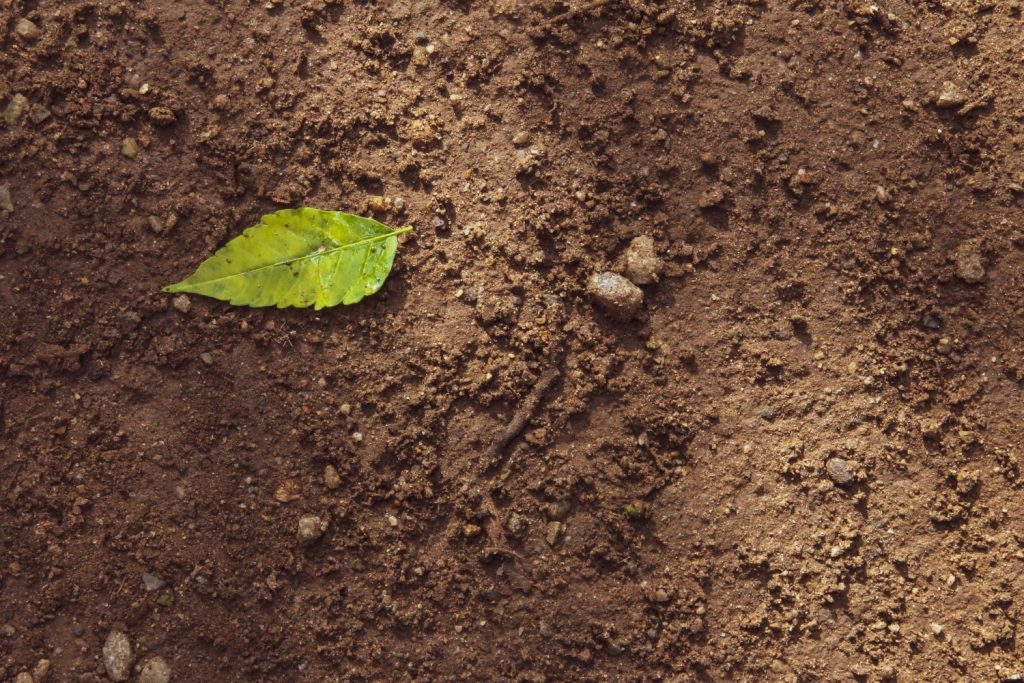
Fertilize the plants regularly
Adding some compost to your soil before planting will help your gladioli as they make their way through the gladiolus growing stages. But as the plants mature and begin to flower, their nutritional needs will increase. Use a phosphorous-dominant fertilizer like 5-10-5 or bone meal to feed your gladioli every 2 to 3 weeks after planting. This helps the plants develop strong roots and flower stalks. Phosphorous is essential for plants because it plays a critical role in photosynthesis, cellular development, and DNA and RNA production. If your gladioli do not receive enough phosphorous, growth will slow and the plants may die altogether.
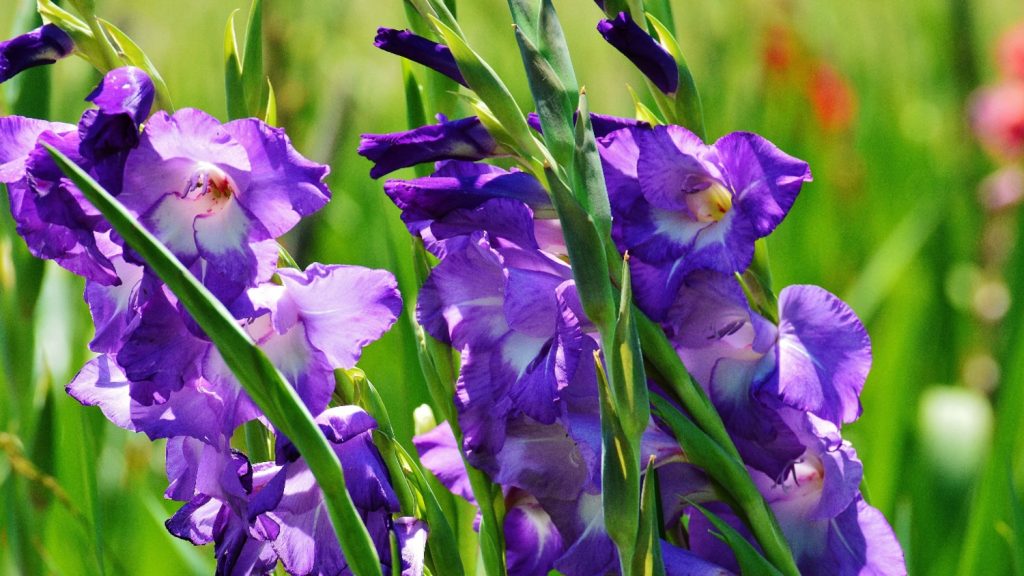
Don’t skimp on pruning
Trimming away excess foliage improves performance by increasing air circulation. It also allows plants to focus more of their energy on flower production. Remove older and dying leaves, and be sure to trim off fading flowers, too, to promote healthy bloom production.
Water the plants well
It’s true that gladioli don’t like wet feet. But they won’t grow well in excessively dry soil, either. Check the soil often by feeling 1 to 2 inches down. If the soil feels powdery, water your gladioli thoroughly. Be sure to only water the base of the plants to prevent fungal infections from setting in. It’s also a good idea to water your gladioli in the morning, to give the excess water enough time to evaporate before nightfall. Keeping your gladioli’s soil moist will go a long way toward maximizing their growth.
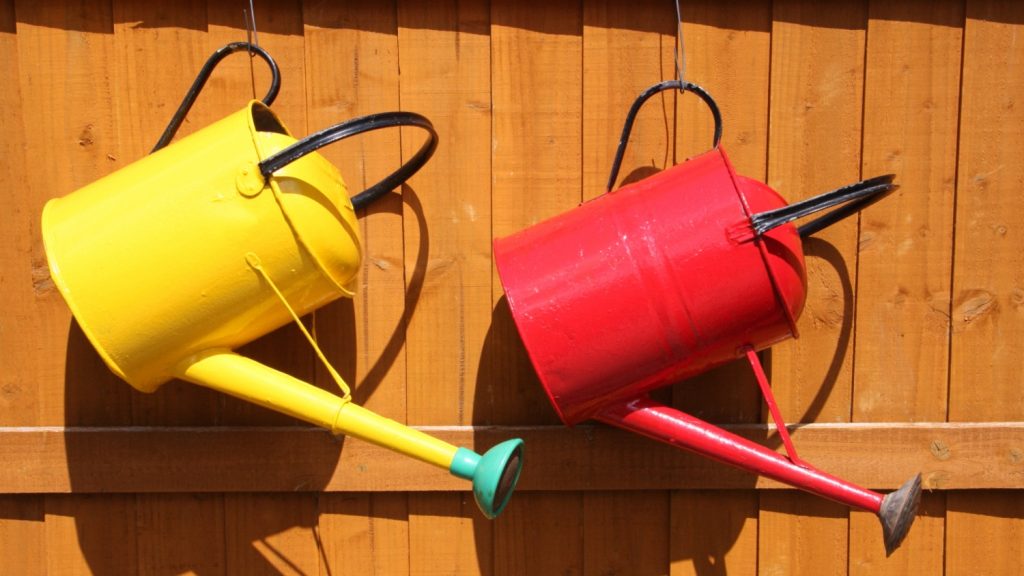
Stake up tall plants
Gladioli can become quite top-heavy as they grow. One strong wind is all it takes to snap them in half. So be sure to stake up tall plants to give them some extra support as they grow. This gives the plants a neater appearance, preventing them from getting tangled and bent. It also aids in disease prevention, since it improves air circulation at the base of the plants. Use a trellis, stakes, or even tomato cages to keep your gladioli upright and intact. Just be careful not to tie the plants too tightly, as this can hinder growth.
Is growing gladiolus worth it?
Watching the gladiolus growing stages firsthand is an exciting experience. Unfortunately, gladioli are sensitive to their environment. If you’re unable to grow gladiolus in your growing zone, consider growing flowers that look like gladiolus, instead.
Overall, growing gladiolus can be incredibly rewarding. By caring for your gladioli properly, you can boost bloom production so you get plenty of gorgeous flowers to enjoy.

Your information was very helpful.
I did wonder if there is any way to get glads to produce more than one stem of blooms per season. I live in southern texas and my glads produce beautiful flowers but only one stem.
Hi Sharron, thanks so much for your question! Getting your gladiolus to produce more stems per season is mostly a matter of meeting their growing requirements. Plant the corms in spring after the last frost of the season in well-draining loamy soil with a pH of 6 to 7. Amend the soil with organic materials, like manure and worm castings, if necessary. Feed the plants every 2 to 3 weeks during the growing season with a balanced NPK fertilizer, like 10-10-10. Stake up the plants and remove spent blooms quickly to help them conserve energy. It gets pretty hot in South Texas (I’m sure you don’t need me to tell you that!). Even though gladioli prefer full sun, they may get too warm in that climate, and that can hinder bloom production. In a hot environment like that, your gladioli will do best with morning sun and afternoon shade. Keeping their soil uniformly moist will also help them stay cool, and encourage them to make more stems. Hope this helps, and best of luck gardening!